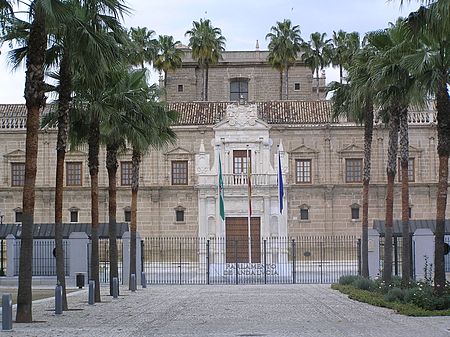Hospital de las Cinco Llagas
Buildings and structures completed in 1558Buildings and structures in SevilleDefunct hospitals in SpainHospital buildings completed in the 17th centuryParliament of Andalusia ... and 2 more
Renaissance architecture in SpainSeats of Spanish regional legislatures

The Hospital de las Cinco Llagas (literally "Hospital of the Five Wounds") in Seville, Spain is the current seat of the Parliament of Andalusia.
Excerpt from the Wikipedia article Hospital de las Cinco Llagas (License: CC BY-SA 3.0, Authors, Images).Hospital de las Cinco Llagas
Calle San Juan de Ribera, Seville Distrito Macarena
Geographical coordinates (GPS) Address External links Nearby Places Show on map
Geographical coordinates (GPS)
| Latitude | Longitude |
|---|---|
| N 37.404836111111 ° | E -5.9881972222222 ° |
Address
Hospital de las Cinco Llagas
Calle San Juan de Ribera
41009 Seville, Distrito Macarena
Andalusia, Spain
Open on Google Maps











